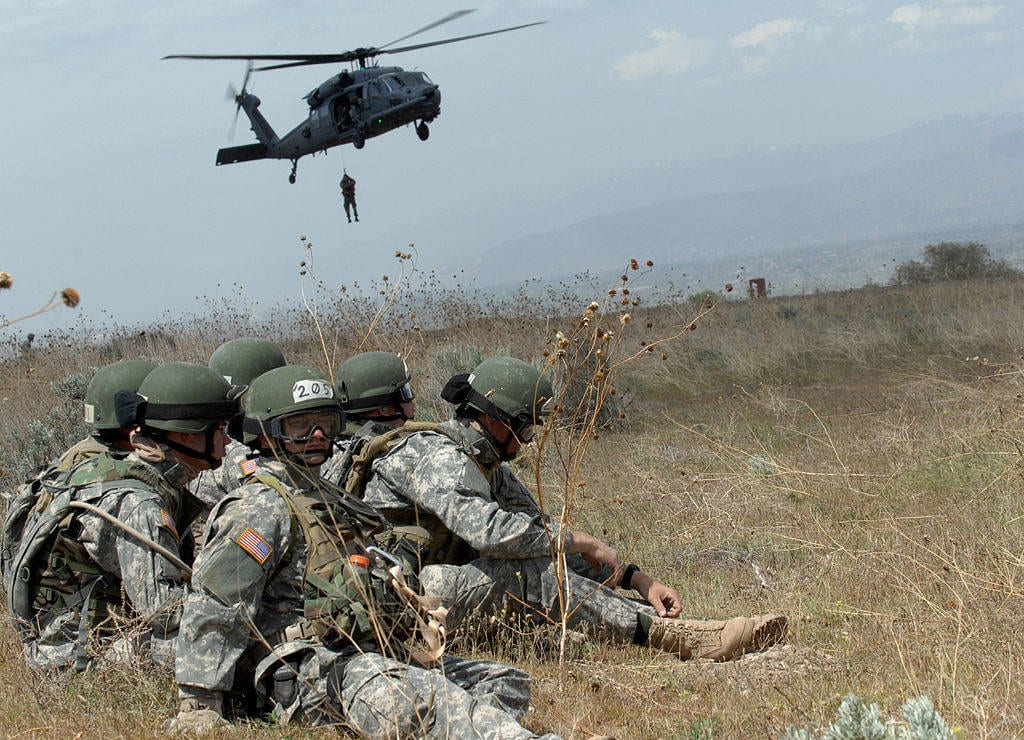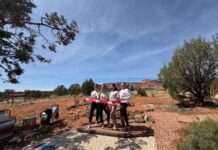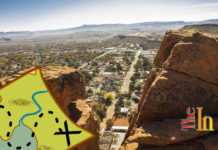The Utah National Guard has served with distinction not only within the state of Utah but also around the world in defense of the United States. After the tragic flash flooding in Hildale on September 14, Utah National Guard soldiers from southern Utah were deployed to assist in the search for missing members of the community. More recently, 160 members in the 116th Engineer Company boarded a plane in Salt Lake City for Fort Bliss, Texas, for two months before heading to the Middle East as part of the largest and longest deployment for the Utah Army National Guard this year. Regardless of where they are sent and what they are doing, it is a sense of community that bonds these men and women in their service to both Utah and the United States.
The Utah National Guard was formally organized March 24, 1894, and was activated for action in the Spanish American War, the Mexican Border War, World War I, both theaters of World War II, and the Korean War. National Guard men and women have also served in the Vietnam War, Desert Storm and Desert Shield. They serve on humanitarian missions, nation building and as a military force. The soldiers of the Utah National Guard have served anywhere from Belarus in the former Soviet Union to Panama, Thailand, Niger, Bosnia, Haiti, and Somalia.
Members of the National Guard can be deployed at any moment to any disaster in the United States or overseas. After the flash flooding on Monday, Sept. 14, in Hildale, members of the National Guard 222nd (triple deuce) Field Artillery Regiment and the National Guard 213 Forward Support Company were deployed by Gov. Gary Herbert to assist in the search for flood victims. These soldiers sometimes crawled on hands and knees for several miles through debris and brush searching for the last flash flood victim. They were deployed for four days.
Lea Hunt’s husband currently serves as a private first class in the southern Utah National Guard 213th unit.
“I’m a national guard wife,” she said. “Being in the military has always been a dream of my husband’s. After completing basic training and monthly training, he was deployed to help with search and rescue operations in Hildale. … With just a three-hour notice, my soldier left his civilian job, went home and packed his gear and traveled to the National Guard Armory in St. George to join other soldiers in his unit.
Lea Hunt said that she got a two-minute goodbye he left, not really knowing exactly where he was going or when she would talk to him again.
“All I could think was, what if there was another flood while he was trying to find the little boy that was missing,” she said. “Would he be safe? Another question was, what if he did find the missing boy, and how would that affect him? The National Guard soldiers are there to help people, defend the country. I know that if there is a tragedy, at a moments notice he will have to leave again.”
The National Guard is part of the reserve component of the United States Armed Forces. It is a reserve military force, composed of National Guard military members or units of each state. There are also units in the territories of Guam, Virgin Islands, Puerto Rico and the District of Columbia. There are a total of 54 separate organizations.
As defined by 10 U.S.C. § 311, all members of the National Guard are also members of the militia of the United States. National Guard units are under the dual control of the state and the federal government. As such, they are often called to serve overseas.
This was the case on Sunday, Oct. 4, when 160 members of the Utah National Guard 116th Engineer Company left Salt Lake City for a deployment in the Middle East. The mission will last 12 months and will begin at Fort Bliss, Texas. The soldiers will spend two months training at Fort Bliss before flying to Kuwait. After arriving in Kuwait, they will work throughout the region, as well as in Afghanistan and Iraq.
The primary mission of the 116th is to help with the building and rebuilding of roads and bases in Kuwait. Their job will also revolve around rebuilding infrastructure in the area. While not directly involved in combat, these soldiers—and their families—understand the risks involved serving in this part of the world. The last time this unit was deployed to the Middle East was in 2007.
The majority of the National Guard soldiers and airmen hold full-time jobs while serving part time as National Guard members. These part-time guardsmen and women are required to attend training or ‘drill’ one weekend per month. The soldiers are also required to attend advanced training two weeks per year. Employers are required by law to give the National Guard members the time off from work but are not required to pay them.
The Utah Army National Guard possesses a broad variety of units and capabilities. Administered by Joint Forces Headquarters, artillery, aviation, maneuver enhancement, military intelligence and special forces units carry out their local missions and are always prepared for overseas service. The largest Army training center in Utah is Camp W.G. Williams, located at the south end of the Salt Lake Valley. Encompassing nearly 30,000 acres, Camp Williams serves not only as a major training site for Utah National Guard units but also for units throughout the U.S. and even some foreign nations.
In speaking of the Utah National Guard, Gov. Herbert stated, “We need you… your experience, your skills, your drive. As a member of the Utah National Guard, you can make a difference.”
The success of the Utah National Guard revolves around the deep sense of community. These soldiers are not only members of the Guard but also Utah citizens. Guard members are constantly serving their communities in many ways, both in and out of uniform. The Utah Army National Guard has outstanding leaders, soldiers, and seasoned combat veterans. The Guard has a long tradition of distinguished service to the state of Utah and the nation.




